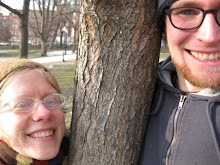
Europe is a spill of coffee on the white saucer on the Spanish coast. Drinking the smooth, thick café al fresco and within view of the Mediterranean, it is also the sugar cube dropped in.
There are particulars of pockets and packing lists that could weigh down the traveler. But so often these are forgotten in dreams of Paella and the myriad possibilities of pâtisserie. (Chocolate ruffles, pain au chocolat, and croissants layered in stories of butter.) It is good to lose oneself, better than forcing too much thought on how many euros are in your hands and how much weight is (or isn't) on your shoulders.
All things in life rely on a good balancing act. Get carried away. Drink enough wine to follow the Italian banter at the dinner table. If you don't drink wine, induldge in panna cotta and try to savor it - one of the biggest challenges posed by Italian cuisine.
These infatuations (which often lead to ecstasies) can be healthily tempered by mindful preparations. Have a budget, make it limber. Decide what you'll pack, leave half of it at home. There is the essential - the water bottle, the pocket knife - and then there is the 300-page guide. Skim it in the months and weeks before your trip, tear out 15 pages that you really believe will benefit you, and relax.
The perfect packer will inevitably lose a pair of underwear (mine was eaten by a yellow lab in Southern France). When you forget something, or leave it on a train, you'll buy or find another. And if you don't need it, leave it for someone else. A woman biked up to me in Millau, France, gesturing to the book I had purposefully left on a bench - well-read and ready for a new pair of eyes. I took it and left it on another seat. Often WWOOF farms have boxes or mudrooms filled with trinkets, clothes, and occasional treasures gifted by past volunteers. From these collections I got a very pleasant farming shirt and to them left books and clothes of my own. You will meet people that may want that extra t-shirt, or an aspiring mountaineer who could use the extra layer that you'll never need while touring Holland in the summertime. Get rid of it and enjoy your lessened load.
Envelope yourself in the continent, the seas, the ocean. And keep your ears and eyes open for recommendations to the perfect tapas bar or a vineyard looking for workers to get their hands grape-stained. There are opportunities and extraordinary events and moments everywhere. Keep sniffing! Talk to people, watch documentaries, read guides if you'd like before you go. Once you're there, your senses - all six of them - will take you much farther than anyone's advice could.








